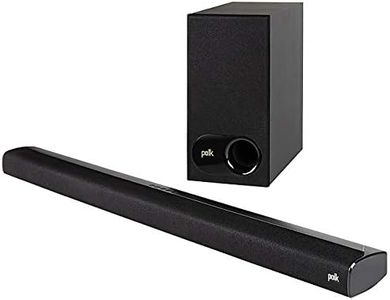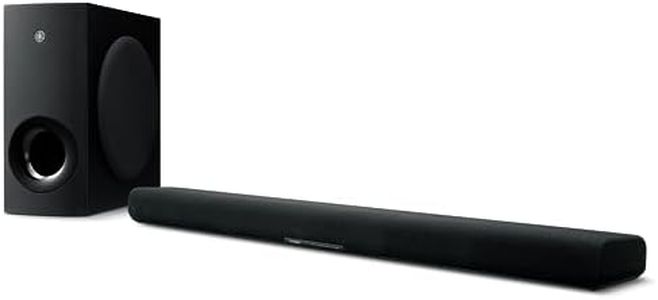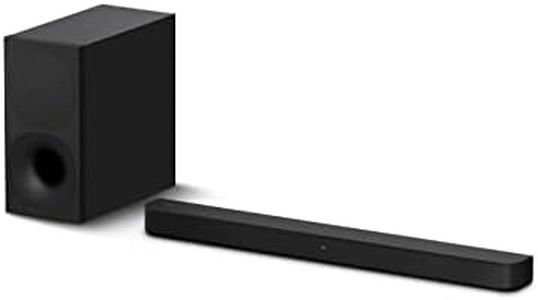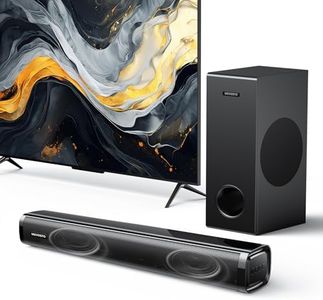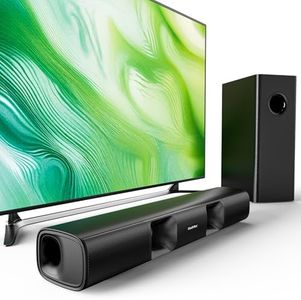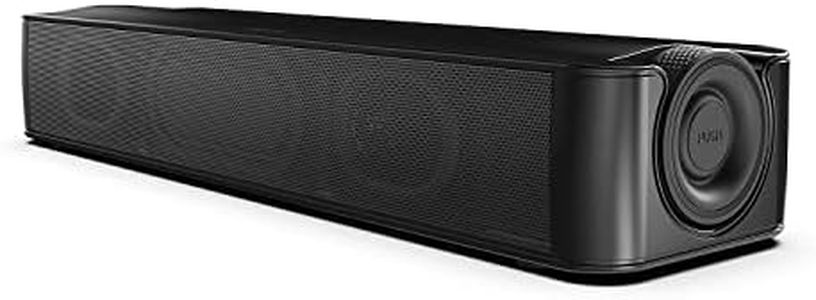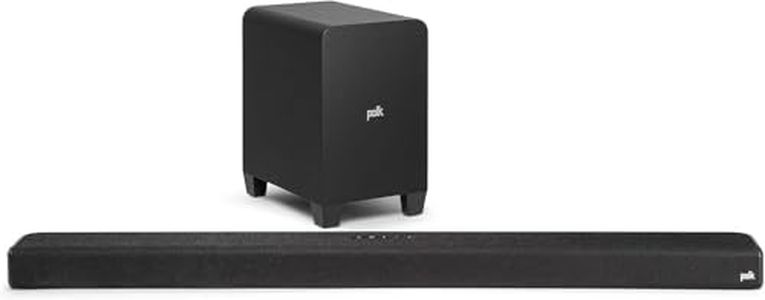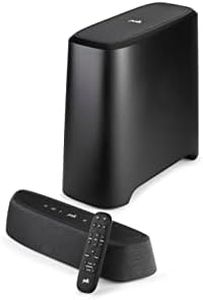We Use CookiesWe use cookies to enhance the security, performance,
functionality and for analytical and promotional activities. By continuing to browse this site you
are agreeing to our privacy policy
10 Best Small Soundbar
From leading brands and best sellers available on the web.Buying Guide for the Best Small Soundbar
Choosing a small soundbar is a great way to improve the audio quality of your TV or device without taking up much space. When selecting the best small soundbar for your needs, it’s important to think about where you’ll be using it (like a bedroom, office, or small living room), what devices you’ll connect to it, and what kind of audio experience you prefer. Focusing on the right specs will help you find one that delivers good sound, fits neatly in your room, and is easy to use.Size and Form FactorThe size and form factor of a soundbar refers to its overall physical dimensions and how easily it fits into your space. This is important because a soundbar that's too large might look awkward or not fit where you want to place it, while one that's too small might not provide enough audio presence. You'll often find lengths under 24 inches are suitable for very compact areas and tabletop placements, while those up to 32 inches still fit beneath most small TVs without overwhelming the room. Consider measuring your intended location so you can be sure the soundbar will fit comfortably and look proportional to your TV or monitor.
Number of ChannelsThe number of channels indicates how many separate speakers or audio paths are built into the soundbar—typically seen as 2.0, 2.1, or 3.1 for small models. This matters because more channels usually mean a richer and more immersive sound experience. A '2.0' system has two main speakers (left and right) with no subwoofer, which is perfect for basic stereo sound. A '2.1' adds a subwoofer (either built-in or external), which provides deeper bass, great for movies and music. A '3.1' setup includes an additional center channel, making voices clearer. Choose based on your preference: for dialogue-heavy TV and a minimalist setup, a 2.0 or 3.1 is good; for more dynamic sound and stronger bass, a 2.1 is better.
Connectivity OptionsConnectivity options describe how you can connect your devices to the soundbar, such as HDMI ARC, optical, Bluetooth, or aux input. This is crucial because it affects what devices you can use with the soundbar—HDMI ARC and optical are often best for connecting to TVs, ensuring good audio quality, while Bluetooth lets you stream music wirelessly from your phone or tablet. Aux (3.5mm) is handy for quick physical connections to a variety of gadgets. To choose well, check what outputs your main device (TV, monitor, or laptop) has and pick a soundbar with matching inputs. If you like streaming music wirelessly, look for Bluetooth.
Sound Modes and FeaturesSmall soundbars often include different sound modes and extra features like voice enhancement, night mode, or virtual surround sound. These modes can tailor the audio to what you're watching or listening to—improving dialogue clarity, boosting bass, or simulating a surround sound experience even from a slim device. When shopping, consider if you want quick access to movie, music, or news modes, as these can make your listening more enjoyable. If you mainly watch TV at night or in shared spaces, features that lower loud parts and lift up quiet voices can be especially helpful.
Audio Power and VolumeAudio power is generally measured in watts and gives you an idea of how loud and full the soundbar can get. For small rooms or desk setups, you don’t need huge power—something in the 20-80 watt range will usually be sufficient. Higher wattage can offer clearer sound at higher volumes, but it’s only useful if you regularly want loud audio or have larger spaces. Think about your usual listening habits: if you just want clear audio at regular TV-watching levels, modest power will do; if you entertain or crave strong, room-filling sound, aim for the upper end of the range.



